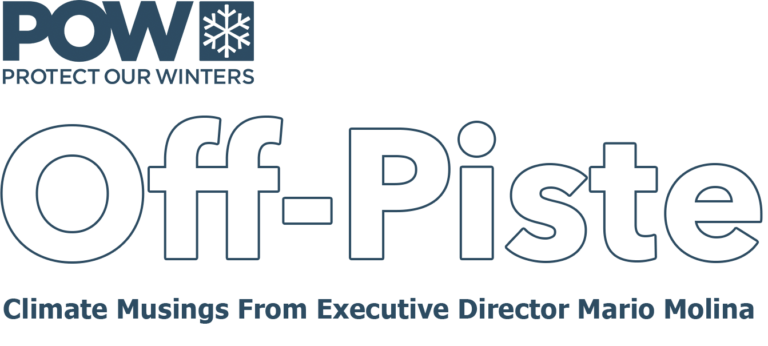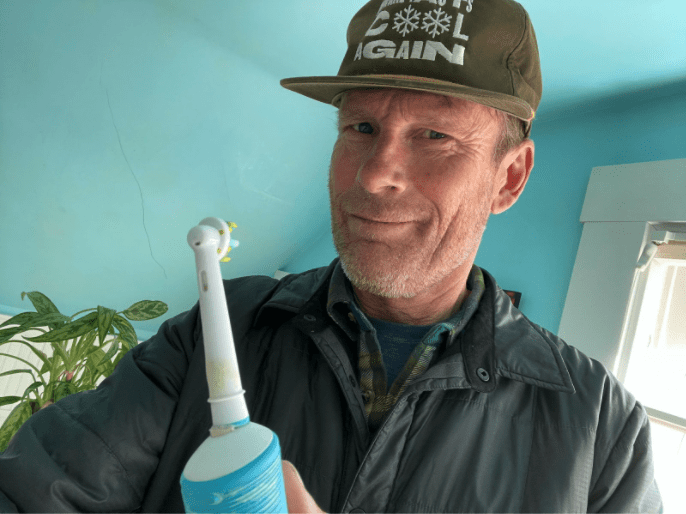
Conrad Anker’s Toothbrush and Climate Risk
Header Photo: Corey Rich
Conrad Anker once said that “risk tolerance is like a toothbrush, everyone should have their own.” I regularly remind my toddler of that sound advice before bedtime. While I agree with Conrad when it comes to evaluating individual risk in the mountains, when it comes to large collective risks that threaten systems we all depend on, I want to know that powerful individuals and institutions aren’t going rogue or sleepwalking.

Danny Moses has a resonant quote in the movie, The Big Short: “The ratings agencies, the banks, the government, they’re all asleep at the wheel?” Well, the answer was, “Yes, yes they are.” All of those people asleep at the wheel brought the financial system to the brink of collapse. Today, rising temperatures and extreme weather events—alongside environmental regulation—pose significant market risks that aren’t properly quantified or disclosed to the public or investors.
In a recent Deloitte Poll of banks, asset managers and financial service institutions, 47 percent of respondents identified the ability to manage Environmental, Social and Governance (ESG) issues and climate risk as an ‘extremely’ or ‘very high’ priority. In the aftermath of the 2008 financial crisis, Congress created the Financial Stability Oversight Council (FSOC) which aims to have “a clear statutory mandate that creates for the first-time collective accountability for identifying risks and responding to emerging threats to financial stability.”
In mid-April, EENews reported on an upcoming executive order that’s expected to ask Treasury Secretary Janet Yellen, in her role as chair of the FSOC, to lead a governmentwide strategy to mitigate climate-related financial risks to public and private assets and issue a report outlining efforts to assess and address those risks. The Commodity Futures Trading Commission and the Federal Reserve have launched internal projects to evaluate the ways climate risk could impact the companies and markets they oversee.
The U.S. Securities and Exchange Commission (SEC) has begun a review of the rules dictating what climate-related information companies are required to disclose. The U.S. House Committee on Financial Services has approved the “ESG Disclosure Simplification Act,” which would require companies to report ESG metrics to the SEC. It seems the government is waking up.
Some, however, are still slumberous. GOP lawmakers in both the House and the Senate are arguing that these moves are government overreach meant to put pressure on what they call “politically disfavored industries” (read: fossil fuels). In a hearing hosted by the Senate Committee on Banking, Housing and Urban Affairs, John Cochrane from the Hoover Institution compared climate risk with banks betting on radios, not TV, in the 1920s, adding, “We don’t know what will happen in 100 years.”
The underlying misconception behind both of these arguments is that climate change does not pose an immediate and significant risk to the financial system. That simply doesn’t square with the fact that in 2020, the U.S. experienced a record 22 extreme weather events, resulting in over $100 billion in direct damages. Supply chains, real estate and energy grids are all vulnerable. To mitigate future vulnerabilities, the country needs a financial system that can operate and thrive in a decarbonized economy.
The first step toward that goal is transparency regarding exposure. Financial institutions should begin by measuring and disclosing the risks they’re carrying, particularly those involved with the principal drivers of climate change that are also the most vulnerable to environmental regulation: fossil fuels and deforestation. Did you know that 13 North American banks account for almost $1.8 trillion of fossil fuel financing in the last five years?
The next step is to set quantifiable, measurable goals to reduce the risks they carry and develop plans for meeting those reductions that include science-based timelines for pulling out of fossil fuel investments that are far more specific than “net zero” pledges. Lastly, regulators will need to work with the finance industry to develop clear guidelines, rules and stress tests that will make climate risk information available to the public to let us decide how that information affects our investment decisions.
In 2012 and 2018, POW’s Economic Impact Reports highlighted the economic threats of warming to the snowsports economy. As the magnitude, scope and rate of change have made climate risk a focal point for financial institutions and regulators, it would be wise for companies and individuals in the Outdoor State to consider the exposure of our investments, retirement funds and financial services portfolios. It’s not only fiscally responsible, it’s a matter of investing in our values. We may not want to share a toothbrush, but we do want to share a future where our money isn’t working to destroy our outdoor playgrounds.
Belong to the solution,
Mario Molina
Executive Director, Protect Our Winters
